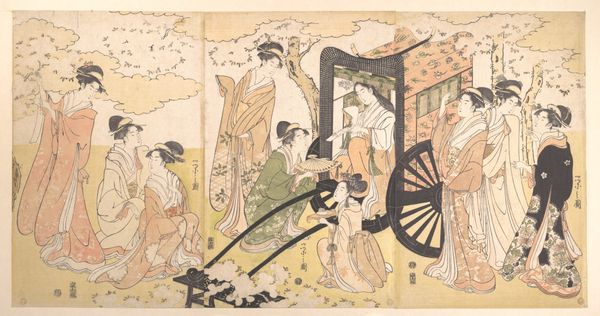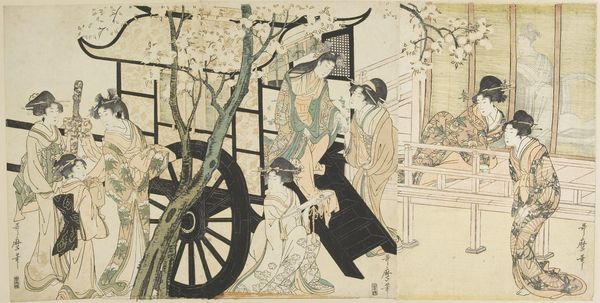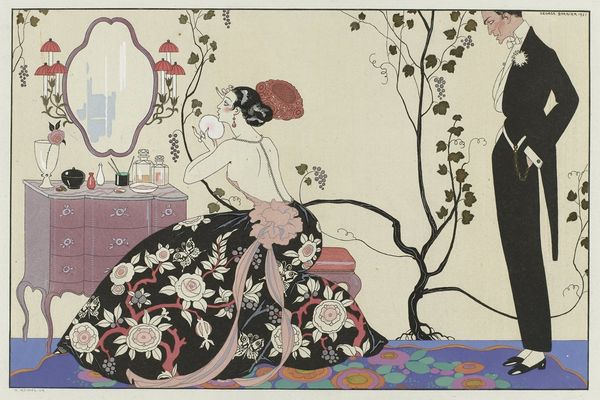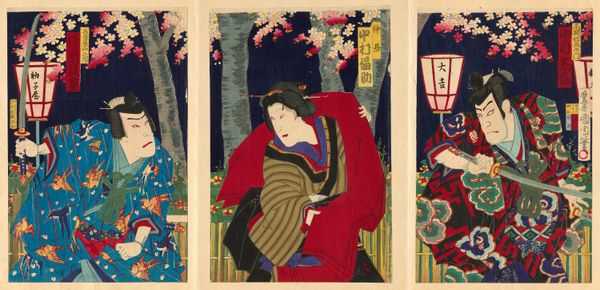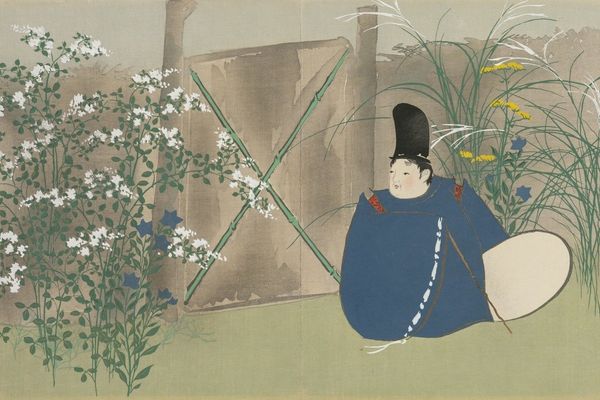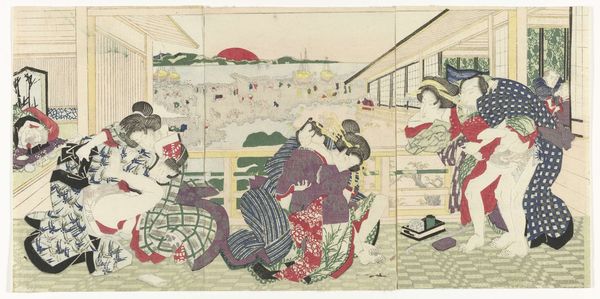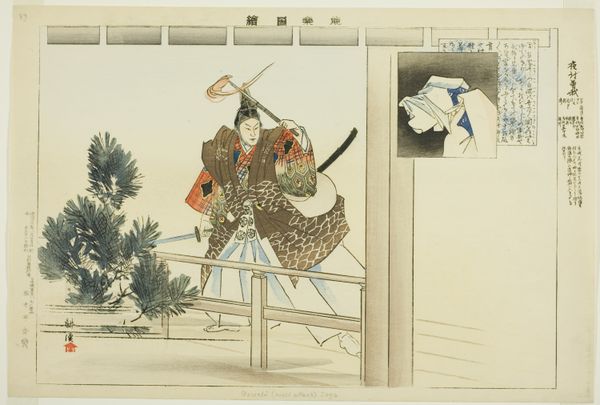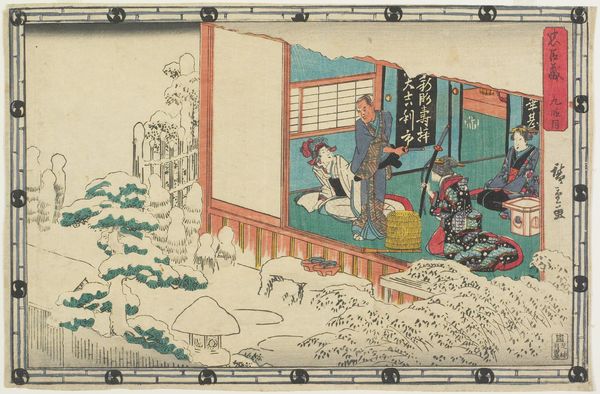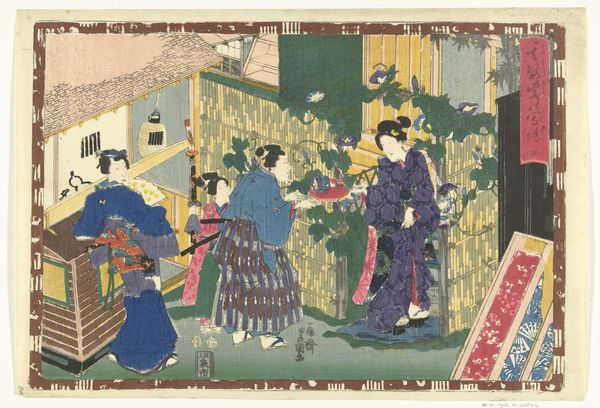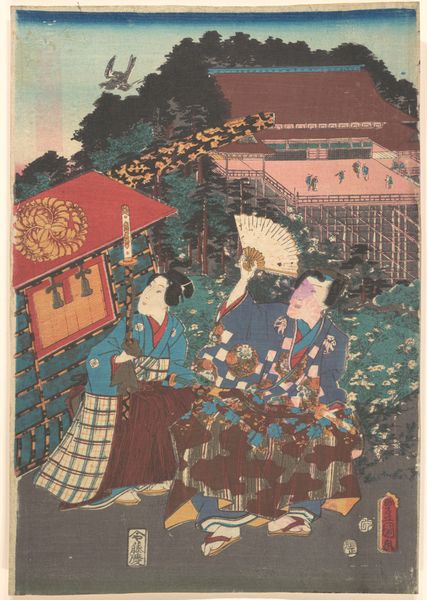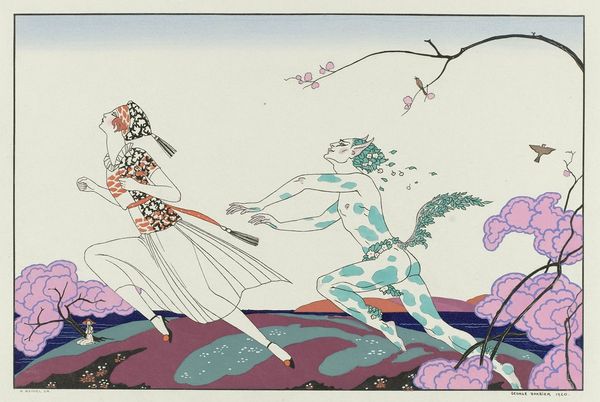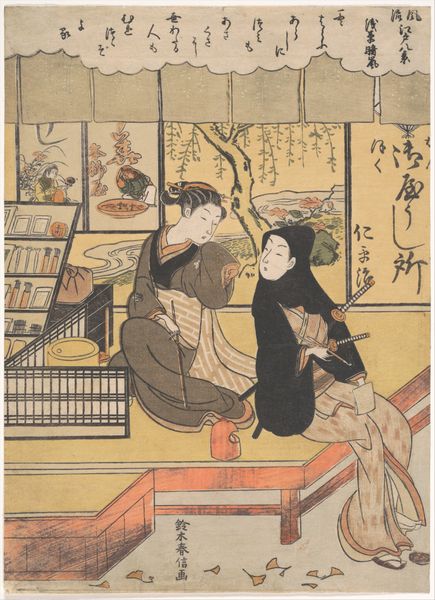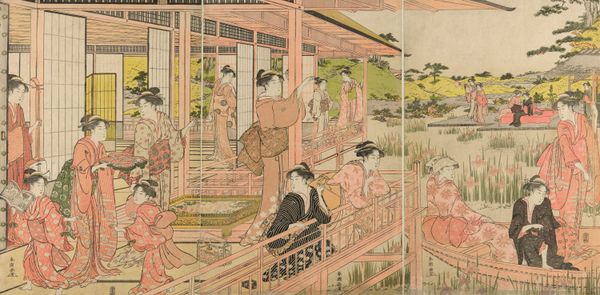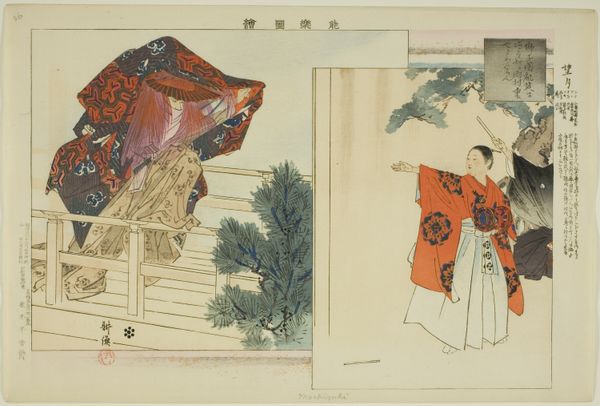
Copyright: Public Domain: Artvee
Curator: Right, let’s discuss Kamisaka Sekka’s “Flower-draped Carts,” created around 1909-1910. I am immediately drawn to how delicate and tranquil it appears. The composition seems deceptively simple, and yet, there's such a calming mood about it. Editor: I am struck by the interplay between ornamentation and labor presented in this image. Sekka so wonderfully merges high art with the practical craft of constructing carts, reminding us that both the practical and aesthetic dimensions involve human labor. Curator: Indeed. Considering the historical context, Sekka’s works were often a bridge between traditional Japanese aesthetics and the evolving influences of Western art. The very materials he used, watercolor primarily, offered accessibility beyond traditional formats like hanging scrolls that catered exclusively to nobility. Editor: Precisely. The carts themselves speak to the period’s transportation infrastructure—whose labor was predominantly drawn from working-class communities—whereas floral draping likely signals a kind of festival. This brings into dialogue the intersections of celebration, labor, class, and even performance, allowing us to view art as intimately tied to societal events. Curator: The geometric details, especially in the wheel design, reveal the artist’s meticulous attention to both form and function. How this precision melds with the flowing watercolor of flowers and vegetation suggests Sekka aimed to democratize the access to art through prints. Editor: Definitely. I see Sekka inviting discourse between Ukiyo-e’s traditional subject matter, and, let’s say, a form of visual activism—an assertion that everyday subjects possess both beauty and symbolic power. We shouldn’t ignore the class issues inherent to that period in Japanese history, so portraying such details humanizes those workers and their socio-economic value in a world becoming modernized. Curator: A fair point. Seeing the carts, once ordinary tools, adorned like festival floats emphasizes an undeniable appreciation for not just skilled craft, but human resourcefulness too. The convergence is seamless in the work. Editor: Overall, a seemingly serene watercolor manages to expose larger questions. We get this beautiful snapshot of its time by studying those everyday objects, processes, labor, and their relationship to culture at the beginning of a century defined by intense socio-political changes globally. Curator: Precisely. We see those carts become far more than the sum of their parts as we dig in.
Comments
No comments
Be the first to comment and join the conversation on the ultimate creative platform.
